HEEL SPURS
Home » Foot & Ankle » Heels Spurs
At Advanced Pain Relief Clinic, we believe a whole-body approach is the best way to provide chiropractic care and wellness for our patients. We know all your tissues and bones must work together to maintain balance, mobility, and function. For example, your feet support your weight all day long, and sometimes gradual damage will cause a condition known as heel spurs. Heel spurs can be painful or painless, debilitating or a minor inconvenience d. As your chiropractor in Owen Sound and Kitchener we will work to identify the cause, and symptoms to relieve the problem.
What are Heel Spurs?
Common Symptoms of Heel Spurs
If you see or feel something bony on the bottom of your heel, you may have heel spurs. Additional symptoms may include:
- Unusual warmth in the heel
- Inflammation and swelling of the heel
- Pain on the bottom of your foot (may not be present at all)
- Pain that begins in the front of your heel and radiates to the arch of your foot
- Sharp pain when standing up in the morning
Common Causes of Heel Spurs
Of course, your treatment plan will depend on the cause of your heel spurs. Our goal is always to figure out what caused your pain, then work to relieve and prevent it. So, what usually causes heel spurs? Here are some of the most common causes and risk factors that may lead to heel spurs:
Plantar Fasciitis – This inflammatory condition affects the ligament that connects your heels to your toes, and heel spurs may result if this tissue cannot allow normal joint movement
- Overuse – If you play sports that include jumping, running, or wearing tight-fitting shoes, you may gradually tear the connective tissue that should cover your heel bone and prevent spurs
- Gait – If you place excessive weight on the back of your foot while walking, you may be causing damage to the bone, nerves, or ligaments in your heel
- Excess Weight – Overweight patients face higher risks of heel spurs because of increased impact
- Loss of Fat – Your heel’s protective pad of fat usually deteriorates with age, leaving the heel more vulnerable
How Our Clinic Treats Heel Spurs
If we suspect you may have heel spurs, our care professionals will diagnose them with an X-ray and start tackling the cause of your spurs right away. For example, if your unusual gait is placing excessive stress on your heel, we will perform a series of adjustments designed to correct imbalance and restore the natural alignment of your spine and legs. We may also recommend stretching exercises, inserts for your shoes, and other lifestyle adjustments that make it easier for your heels to support everyday movement.
